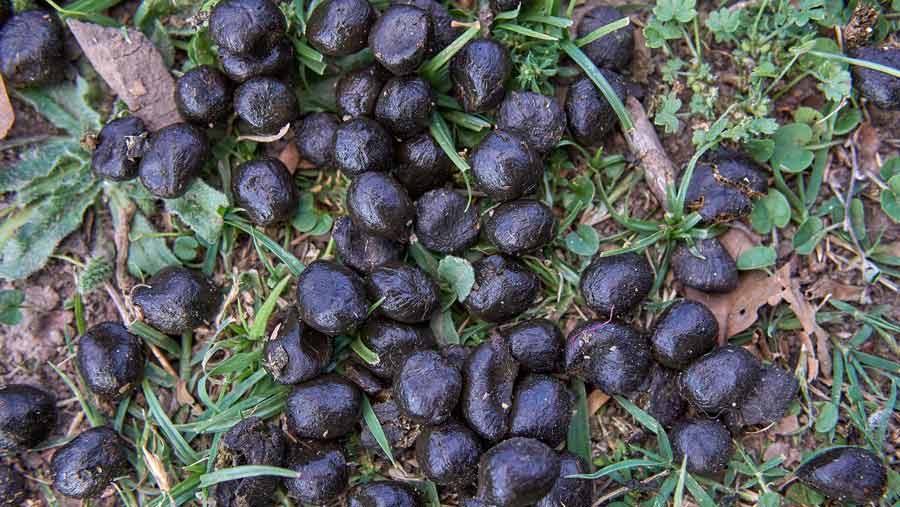Experts issue 4-step guide to faecal sampling
 Sheep droppings © Lorena Ledesma/Wirestock/Adobe Stock
Sheep droppings © Lorena Ledesma/Wirestock/Adobe Stock Sheep farmers wanting to get the most out of their faecal egg counts (FECs) have been reminded how best to locate, collect and store dung samples to achieve consistent laboratory results.
A video issued by Moredun Institute researchers covers all aspects of faecal sampling for farmers aiming to use anthelmintics sustainably.
See also: Why demand is hotting up for worm-resistant rams
An FEC counts the number of worm eggs in dung and is used to monitor worm burden. Results are presented as “eggs per gram” (epg), which is representative of the number of adult worms in the gut of the sheep.
FECs are used to:
- Help determine the need to treat – if epg counts are low, flocks could save on a dose of wormer
- Test the efficacy of a worming treatment through an on-farm FEC reduction test (how to do this)
- Supply a grazier with information about the amount of contamination on the pasture.
Moredun’s four top tips are:
1 Target your efforts
- At feed or water troughs
- At housing or handling
- Upon rousing at morning checks – sheep typically defecate at this time
- By gathering and holding sheep in a field corner
2 Be prepared
- Wear gloves to keep your hands clean
- Collect 15 samples – these will be pooled in the lab to give a single egg count
- Have the 15 containers or bags supplied ready to collect the individual samples
- Aim for a sample the size of a 50p piece
3 Take good-quality samples
- Take warm samples (they should make the bag steam up) that are pliable, have a shiny appearance and probably have flies around them
- Avoid dry, desiccated or hard samples
- Avoid samples that are dull in appearance and without flies around them
4 Look after the samples
- Remove as much air from the collection bags as possible, if using, or follow container instructions
- Store in a fridge if you must wait for a day to post them. The sooner they are examined, the better
- Avoid collection and posting on a Friday as they may not get to the lab until the following week
- Complete all forms to provide background information on the sheep being tested.
See more
